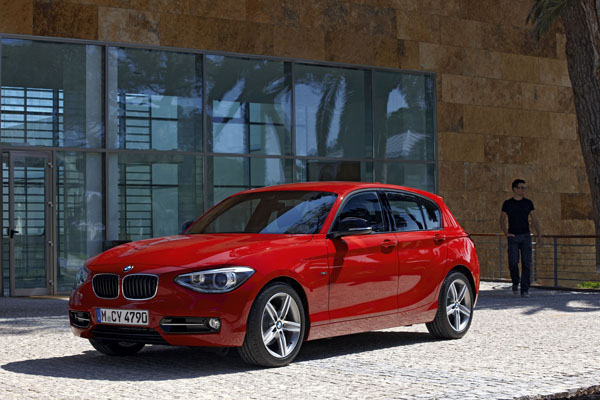The smallest vehicle in the BMW car range, the 1 Series is aimed at those who enjoy driving, rather than people who treat driving as a chore. It features excellent engines driving the rear wheels.
A downside is that rear-drive steals cabin and boot space as its engine / transmission is mounted longitudinally rather than sideways, so it encroaches into the passenger area.
There’s good legroom in the front seats, though foot-width is restricted by the gearbox housing. The back seats are fine for kids, but if you carry adults back there may have to be some juggling with front seat placement.
The second generation 1 Series, launched in stages from January 2011, and the opening point in this week’s used car review, is slightly larger than the earlier ones.
In 2014 BMW renamed the sporty coupe and convertible 1 Series models as the 2 Series. They have a quite different history to the 1 Series, so we will cover them in a separate feature. Note that while some 2 Series are revised 1 Series, others share their underpinnings with the BMW Mini.
BMW 1 Series comes with a huge choice of powerplants. There are three-, four- and six-cylinder units ranging in capacity from 1.5 to 3.0 litres. All engines in the second Series are turbocharged.
BMW 1 Series M Coupe has even more power from its twin-turbo six than the standard turbo-petrol models, provides stunning acceleration.
Turbo-diesel engines became part of the BMW 1 Series lineup from May 2006. Though they provide excellent torque they missed out on the virtually instantaneous response so some drivers aren’t keen on them. Try before you buy. From the 2011 models the turbo-diesels are noticeably better.
Manual gearboxes are six-speed units. BMW manuals are a joy to use, with slick changes through the well-chosen ratios. This is another benefit of the use or rear-wheel drive as the gearbox is close to the gearlever. Unless you’re stuck with heavy-duty commuting may we suggest opting for the manual to enjoy the sheer driving pleasure of the manual?
A six-speed automatic was fitted in the 1 Series until October 2011 when an eight-speed auto was introduced in most models, some diesels still used the old six-speeder auto.
The 1 series had a facelift in mid 2015, with a re-design to the front and rear bumpers as well as the head- and tail-lights.
They received a major upgrade in October 2016 in its engine and technology departments, with a further emphasis on improving fuel efficiency of their already impressive drivetrains.
A third generation of the BMW 1 Series arrived here in October 2019 but is too new to be available on the used car market so we will hold off until we do our update the popular little Bimmers.
BMW is long established in Australia and there are dealers in all metropolitan areas and in major country centres. In remote areas you may have trouble finding a dealer or a mechanic.
Ideally a BMW should be serviced and repaired by authorised dealer as these are complex machines with high-tech electronic components. The dealer will connect the car to a computer – which is located in Germany – to get the diagnosis, as well as the latest information on updates.
A 1 Series with a written service record will generally fetch a higher price on the used market. It’s smart to keep up this record once you have bought a used Bimmer.
There are quite a few mechanics with formal BMW training but now working as independent specialists. They probably, but not certainly, have access to the factory updates. Owners swear by their work.
Insurance charges are high for a small car – but not too bad when you consider the complexity and the quality materials used in the BMW. Shop around, but make sure you do accurate comparisons.
WHAT TO LOOK FOR
Hard driving can result in a big buildup of brake dust on the wheels. Smart sellers will clean this, not so bright ones may forget to get rid of the dust inside the backs of the wheels.
Uneven front tyre wear is another sign of one that has been fanged, as are signs of wear part way down the sides of the tyres. The latter may even be caused by track work.
Signs of crash repairs such as mismatched paint, paint overspray and ripples in the panels could mean the little Bimmer’s come into contact with something nasty.
Pearl and metallic paints can be difficult to match after crash repairs, or just door dings. Check each panel matches its neighbour in strong, direct sunlight.
The engine should start within moments. Arrange to do this with the engine cold after an overnight stop.
During your test drive feel for any hesitation under acceleration and look for oily smoke from the exhaust when the engine is worked hard.
Make sure manual gearchanges are quiet and slick. Fast changes from third to second gears are usually the first to show problems.
Automatic changes should be all but unnoticed unless you’re driving pretty hard. Check the manual override systems work correctly.
CAR BUYING TIP
Sporty cars that are driven hard should be regarded with suspicious. On the other hand they are usually serviced by the book and treated like babies.
